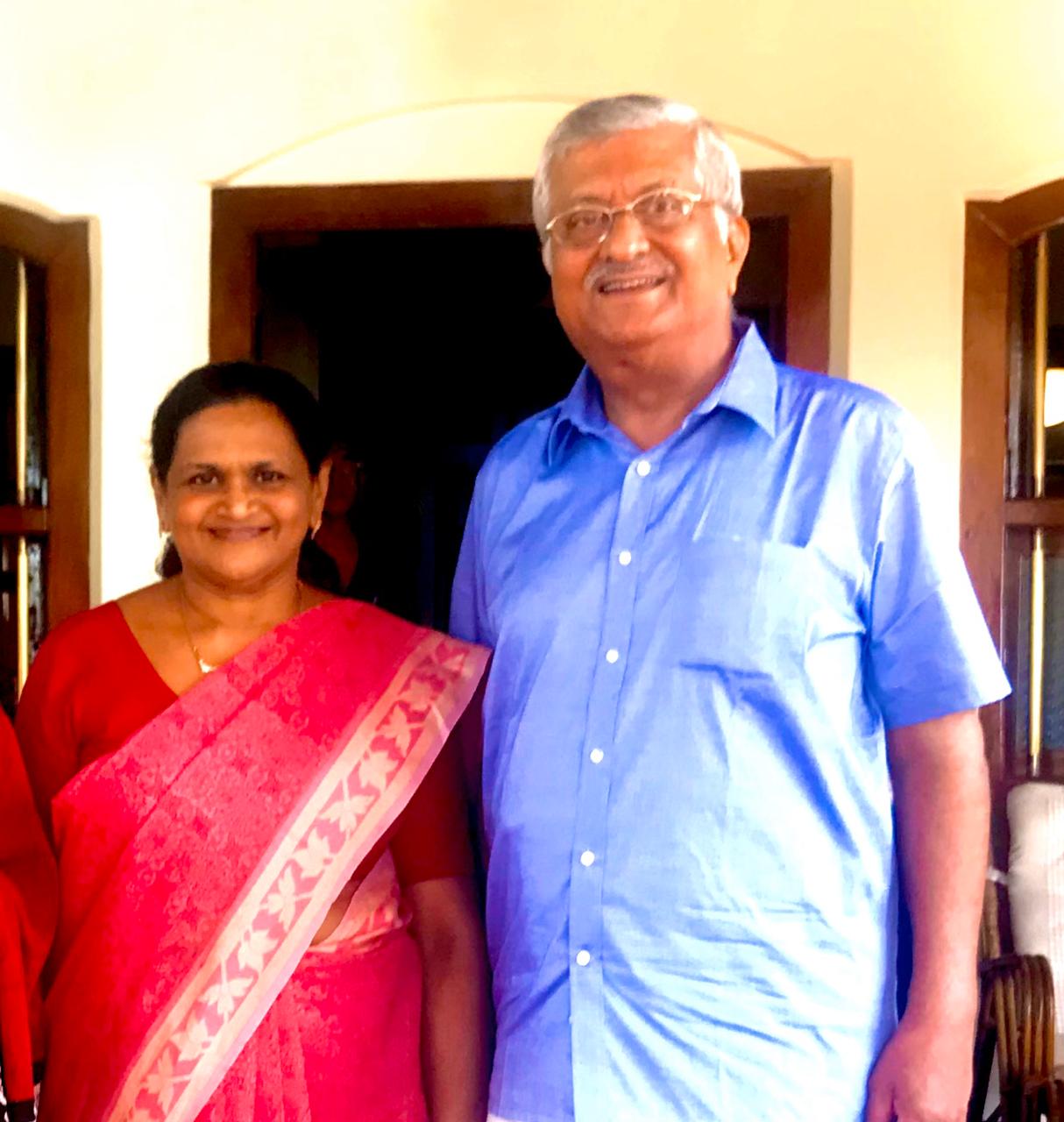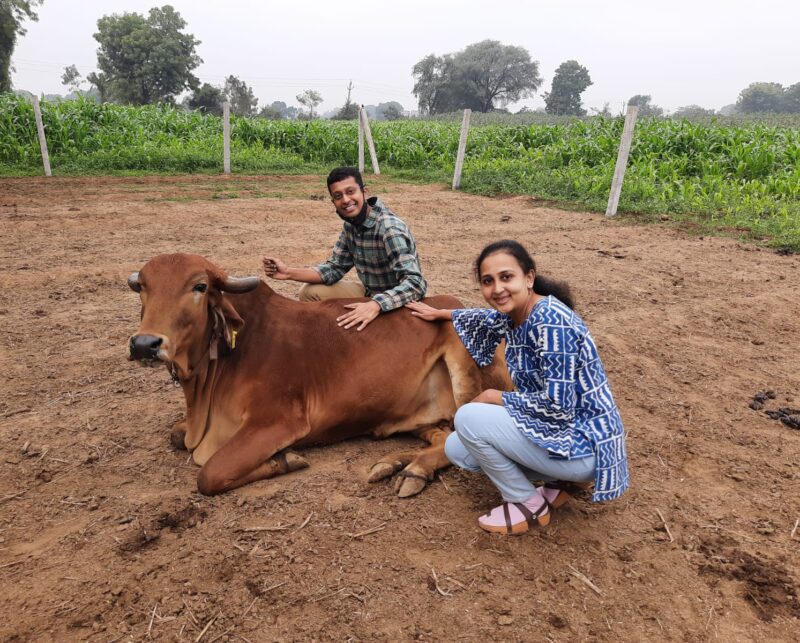Ayisha Manzil is a grand mansion built in the 1800s. It was purchased by the Moosa family in the 1900s and became one of the first homestays in the northern districts of Kerala. This iconic restaurant is best known for its delicious food – Mr CP Moosa takes guests for a walk to the markets, while Faiza Moosa prepares such specialties of Malabar as the Biryanis, Pathiri, Neypathil, Pettipathiri, Muttamala, Alisa, Unnakayi, Erachipathil, etc, and myriad seafood dishes. They share with us the recipes for an Onam Sadya.
Flower carpets, gorgeous traditional costumes, various art performances and a delicious feast- Onam in Kerala is time for celebration and joy. This festival begins on the 13th nakshathram (star) Hasta according to the Indian Astronomy and ends on the 22nd nakshatra Thiruvonam in the month of Chingam in the solar calendar followed by people in Kerala. This is also New Year’s eve in the State. Normally this overlaps with the months of August and/or September of the Georgian calendar.
We all grow up listening to stories and the legends in Kerala say that this place was once ruled by a kind demon King called Mahabali. His generous nature soon earned him the envy of the King of the Gods, Indra who sought help from Lord Vishnu. It is believed that Lord Vishnu incarnated for the 5th time as Vamana the little Brahmin boy. He ended the rule of Mahabali who in turn received a boon to visit his Kingdom every year. Onam is celebrated to commemorate the rule of this benevolent King and the good olden days of his rule.
Sadya Recipes
Onam celebrations have regional variations. This is reflected even in the sumptuous feast, Sadya that is served on Thiruvonam. There can be upto 25 dishes in this feast and in this article the recipes of the most common dishes are included.
Sadya is incomplete without Ghee, tamarind chutney, small ripe, banana Olan, Sambar, Rasam, Kaalan, Coconut chips, Payasam (pudding), pappad, pickle and buttermilk. Sadya is served on a fresh plantain leaf with the edge of the leaf to the left of the person to whom the meal is served. From the left pappadam and banana is served first. It will be followed by banana chips, tamarind chutney, thoran, Olan, Aviyal, Koottu curry and Kaalan. After that rice is served. Ghee is poured into this rice and the custom is to mix pappadam with this ghee and consume some rice. Daal paste is also served with it in some regions. It is then followed by Sambar and Rasam respectively. Payasam is then served in the leaf itself. Some enjoy payasam mixed with pappad. There are at least 5 varieties of payasam made in cow’s milk or coconut milk. In the last course buttermilk is served.
According to Ayurveda there are 6 different tastes- sweet, sour, bitter, salt, pungent and astringent. All the dishes in Sadya include these tastes and balance the feast for the taste buds.
Snake gourd Thoran
Thoran is a dry vegetable dish and can be made out of any vegetable of your choice. Padavalam or Snake gourd is supposed to complement the Ketogenic diet. The ingredients required for this thoran are:
- 1 Snake gourd
- 12 shallot if they are small
- 1/4 cups of grated coconut
- 2 green chillies
- 1/2 teaspoons turmeric powder
- 1 tablespoon coconut oil
- 1 teaspoon mustard seeds
- Curry leaves
- Salt to taste Preparation Time: 10 min
Steps:
- Clean and cut snake gourd in small cubes and set aside.
- Cut shallots into small, slit green chillies.
- Heat oil in a pan and add mustard seeds. When it crackles add curry leaves, green chillies, snake gourd, shallots, turmeric and salt. cover and cook, no need to add any water since snake gourd has enough water in it. Once it is cooked and all the water evaporated add grated coconut.
Pineapple Pachchadi
Ingredients:
- A small ripe pineapple [not over ripe], cut into tiny cubes
- ½ cup of grated coconut
- ¼ teaspoon of cumin seeds
- 2 teaspoons of mustard seeds
- 2-3 red dried chillies
- 1 green chilli [or to match your spice level preference]
- Curry leaves
- Turmeric powder
- Salt to taste
- ½ cup of curd
- Jaggery to sweeten the dish
Preparation Time: 20 min
Steps:
- Make a smooth paste out of ½ cup of grated fresh coconut, 1 green chili (chopped), ½ teaspoon mustard seeds and ¼ teaspoon cumin seeds. If you like mustard flavor, you can add 1 teaspoon mustard seeds.
- Add 2 to 3 tablespoons of water and grind till smooth. Keep the coconut paste aside.
- Add enough water and cook to soften the pineapple cubes. Remember not to overcook the pineapple cubes.
- Now add the ground coconut paste.
- Season with salt as per taste. Mix very well.
- Simmer and cook this pineapple mixture for another 2 to 3 minutes on a low flame. Then keep the pan down and let this mixture cool down at room temperature.
- Beat ½ cup curd with a spoon or wired whisk till smooth. Add this to the pineapple-coconut mixture once it has cooled down.
- Heat ½ tablespoon coconut oil in a tadka pan or a small frying pan. Keep flame to a low and add ¼ teaspoon mustard seeds.
- Then add 1 dry red chili (seeds removed) and 7 to 8 curry leaves to it once the mustard seeds crackle.Fry for a few seconds till the curry leaves become crisp and the red chili changes color. Do not burn them.
- Pour this hot mixture into the pineapple-coconut-curd mixture.
Koottu Curry
This side dish has roasted coconut as topping and that gives a unique aroma for it unlike other dishes in Sadya. The following ingredients are required to prepare Koottu Curry:
- Kadala/ Balck chickpeas 1 cup (soaked overnight)
- 1.5 cups of water
- 1 medium sized raw plantain cut into cubes’
- 1 cup yam cut into cubes
- 1 tsp chilli powder
- ½ tsp turmeric powder
- 1 cup of fresh, grated coconut
- ½ tsp cumin seeds
- 1 tbsp pepper powder
- 1 tbsp jaggery
- 10-15 curry leaves
- 2 dry red chillies
- 1 tsp mustard seeds
- Coconut oil as required
- Salt to taste
Preparation time: 30 min
Steps:
- Pressure cook the black chickpeas with water and a pinch of salt for 3 whistles. Once cooled, drain the water and keep aside.
- Grind ½ cup grated coconut with cumin seeds to a coarse paste, keep aside.
- In a separate pan, add yam and plantain cubes, turmeric powder, chili powder, & salt, and cook on a medium flame. Once it starts boiling, simmer it and cook until the veggies are soft.
- Lightly mash the cooked vegetables with the back of a wooden spoon. Add the cooked black chickpeas and the grinded coconut paste, mix well and continue cooking till the raw coconut smell subsides.
- Now add pepper powder and jaggery to the pan, mix well and check for the seasoning. Place the lid, cook for another 2-3 minutes, and then switch off the flame.
- To prepare the tempering / garnish, heat oil in a separate pan and splutter mustard seeds. Add curry leaves, dry red chilies and grated coconut. Roast the coconut until they turn golden brown.
- Pour this over the main mixture and mix well.
Aviyal
Preparation time: 20 min
Ingredients:
- Ash gourd – 100 gms
- Pumpkin – 100gms
- Raw banana – ½
- Yam – 100gms
- Carrot – 1 Medium
- Drumstick – 1
- Beans – 4 – 5
- Potato – 1 (small)
- Turmeric Powder – a pinch
- Salt to taste
- Yoghurt – ½ cup slightly sour
- Coconut oil – 1 tbsp
- Curry Leaves a few
To Grind
- Scraped Coconut – 1 ½ cups
- Green chillies – 4 – 5 to taste
Steps:
- Wash, peel and cut all vegetables lengthwise into about 2” sized pieces.
- In a heavy bottom Kadai add Yam, plantains and ash gourd at the bottom (since these veggies take slightly longer time to cook). Then add the other veggies. Add a pinch of turmeric powder and salt to taste. Add about 1 cup of water and cook covered until the vegetables are just done. They should not get overcooked.
- In the meanwhile, grind fresh scraped coconuts with the green chillies into a fine paste using very little water.
- Add the ground paste and the slightly sour yoghurt. Mix slowly without mashing the vegetables. Add curry leaves and drizzle the coconut oil. Mix carefully until the veggies are coated with the coconut and yogurt. Remove from heat.
Paal Payasam
This sweet, creamy South Indian kheer milk and rice pudding is one of the sweet dishes served in Sadya. This is probably one of the simplest payasam recipes!
All you need to make this payasam is milk, sugar, rice and ghee. You may choose to garnish it with cashew, raisins and a pinch of saffron.
The key to get the perfect taste is “slow cooking”. Let’s now look into the details of preparing this delicious desert.
Measurements:
Unpolished, parboiled broken rice: 1 cup
Milk: 4 cups (boiled)
Sugar: 4 cups (slight variations can be made to suit individual preferences)
Ghee: 1 tablespoon
Cashew and raisins : a hand full
Steps:
1. Heat ghee in a hard bottom vessel in low flame. Remember that you will need a vessel that would hold all the ingredients.
2. Add rice to it and stir it until you get the aroma of the rice. Remember, rice should not become brown.
3. Add milk to it and stir till the milk boils. Ensure that the flame is low. Continue to stir and get the rice grains cooked. Unpolished, par boiled broken rice is non-sticky and this is the ingredient in traditional recipe.
4. Once the rice is boiled, add sugar and stir till it dissolves.
5. Roast cashews in ghee and add raisins to it. Garnish the pudding with this. You may serve it into another bowl and add a pinch of saffron to it. Paal payasam is ready to be served.

















Nice
Wish I could come n stay one time here